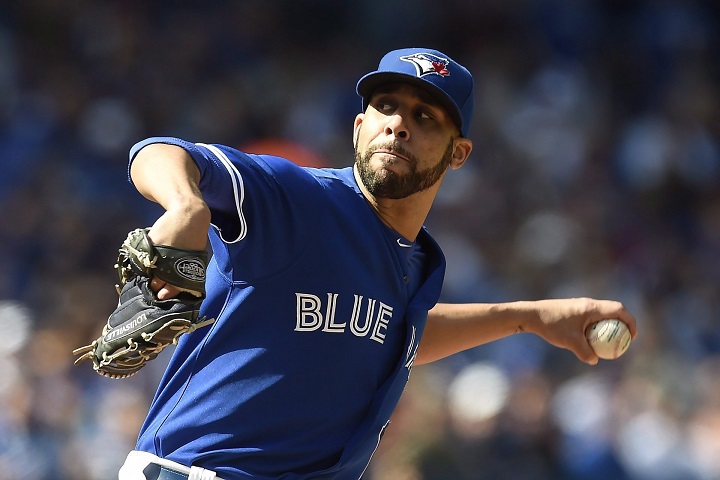TORONTO – The Blue Jays lost a star pitcher yesterday, and dark forecasts for 2016 have begun.

Ace lefty David Price accepted a staggering seven-year, $217-million offer to join the Boston Red Sox, leaving a hole in Toronto’s starting rotation.
The Blue Jays bandwagon is already slowing down and doomsayers are blasting “cheap” team management and predicting a regression from the team’s 2015 playoff run.
Sure, David Price is a great pitcher and we’re not going to pretend otherwise. Losing him to another team, particularly a division rival, stings. Next season might be a tougher one, but Price’s departure isn’t the catastrophe some are making it out to be. Here’s why.
Compromising the future
The price tag for Price is jaw-dropping, the richest pitching deal in baseball history. Boston will still be paying him over $30 million in 2020, an enormous commitment that can hamstring a team’s development.
READ MORE: Blue Jays believe winning ball club will help attract coveted free agents
Of course, some fans will argue the Jays are in “win now” mode. However, signing Price doesn’t guarantee a win, it would have only ensured Toronto had a much harder time attracting other free agents for the next seven years.
9 wins out of 93
Price was spectacular during his cup of coffee in Toronto, but it’s worth remembering that of the team’s 93 wins, Price only pitched nine (he lost one game, plus another no-decision).
There’s something to be said for intangibles of course, since Price was by most accounts, a great teammate and mentor as well. But the Jays have other clubhouse leaders and more playoff experience under their belts to boot.
One man doesn’t the team make
Toronto won’t live or die by Price.
He may be a great pitcher, but he didn’t hit any of Toronto’s league-leading 232 home runs and he scored zero of its astounding 891 runs.
He didn’t turn Josh Donaldson into an MVP or transform Kevin Pillar into an excellent every day centre fielder. This team still has an explosive lineup and promising second baseman Devon Travis will hopefully return in 2016. This remains a team to watch.
WATCH ABOVE: ‘God’s Gonna Cut You Down’: Video of Blue Jays home runs goes viral
Stroman’s return
On a similar note, the Jays won most of those 93 games without young pitcher Marcus Stroman, who excelled in his late-season return from an ACL injury.
WATCH: Blue Jays pitcher Marcus Stroman knows all about comebacks
Stroman isn’t yet the proven ace that Price is, but he’s coming into 2016 healthy – barring another freak accident like last year – and certainly helps plug the hole left by Price’s departure. Plus, Stroman has shown playoff poise, whereas Price…
He’ll help you reach the playoffs, but…
Price is undeniably elite in the regular season, but there’s no denying that he hasn’t performed well in the playoffs.
It happens in every sport, where even all stars and Hall of Fame-calibre players just don’t achieve in the playoffs, like erstwhile Expo Vladimir Guerrero.
Price looked dominant in Game 2 of the American League Championship Series, but a combination of errors and his own struggles resulted in yet another loss, leaving his playoff record at 0-7 with a lacklustre 5.24 ERA.
READ MORE: Toronto Blue Jays lose to Kansas City Royals, down 2-0 in ALCS
Getting to the playoffs is great, but that was 2015. The next step is to win in the playoffs and for all his talent, Price hasn’t helped accomplish that.
Sell-by date approaching
Pro athletes exist in their own odd age demographic where 30 is getting old and 40 is elderly. That aging process is accelerated for pitchers. Price will turn 31 this season, meaning he’s already approaching old age and history suggests Boston will be paying him a fortune well past his sell-by date.
Price is a former power pitcher who’s gradually transitioned to a more nuanced game as age creeps up and hurlers tend to lose a few mph off their fastball.
While Price’s evolution hasn’t compromised his effectiveness, it’s hard to predict a pitcher’s drop-off. Statistically, it’s become rare for pitchers age 34 or above to remain dominant on the mound. Price might still get you 200 innings a year in 2019, but is that worth $30 million?




Comments